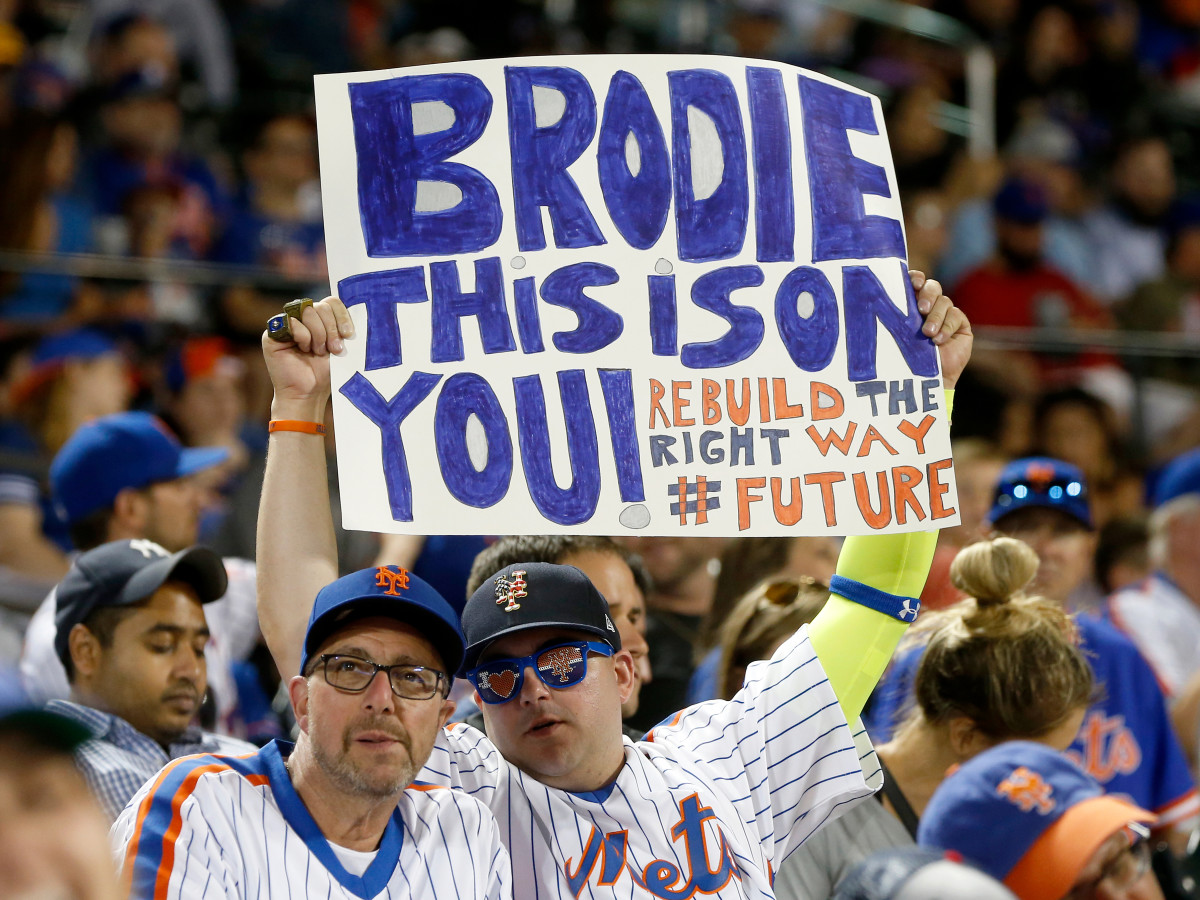The Mets Would Be Foolish to Trade Noah Syndergaard

There are two paths the Mets can go down following their surprising trade for the Blue Jays’ Marcus Stroman, and only one of them represents a step forward for a franchise that often looks like it’s running in place. Rumored to be shopping Noah Syndergaard, New York has instead zigged when everyone else expected a zag in acquiring Stroman—on the surface, a go-for-it-now move despite the team’s record (50–55) and playoff position (dead in the division, six out of the second wild-card). But even as fans were reacting to Stroman’s arrival on Twitter, reports surfaced that the Mets are still envisioning a Syndergaard trade, which would be a decidedly backward move in the face of Sunday’s big deal.
The loudest conversation in baseball leading up to Wednesday’s trade deadline has centered on Syndergaard, the imposing righty amid a down year—a 4.33 ERA and 94 ERA+—but possessing some of the best raw stuff of any pitcher in the league. But despite that and the fact that he’s under team control through 2021, general manager Brodie Van Wagenen and his front office are apparently taking offers on Syndergaard, for reasons that are hard to understand (if they’re even visible). Perhaps this is a case of a team and a player being a poor match for one another, or maybe Van Wagenen thinks the big Texan’s results will never quite match his repertoire or reputation. (That the list of teams most interested in or linked to Syndergaard includes some of the game’s most forward-thinking franchises like the Astros, Yankees and Twins suggests that, if the Mets can’t figure out how to turn his potential into production, maybe the problem lies with them.)
But the most likely reason for the Mets to shop Syndergaard is what he would bring back: a ransom of prospects, more than any other player on the market right now could. (His only competition in that vein is the Indians’ Trevor Bauer, who brings his own unique set of complications to any would-be buyer.) That stance became all the more understandable the further the Mets slid out of the wild-card race, making it look like the focus for Van Wagenen, after his misguided offseason moves, was to reset and try again with an eye on 2021.

The Stroman trade complicates that line of thinking. For starters, to get Stroman, the Mets had to give up a pair of pitching prospects, including their top one, Anthony Kay. Neither Kay nor the second player departing, Simeon Richardson Woods, is a superstar in the making, but they’re still two potential pieces who could have helped down the road and were sacrificed for someone who’s here to produce now. On top of that, Stroman may not be in Queens for long. Next season is his last before he hits free agency, and though the Mets could very well have designs on convincing the Long Island native to stick long-term with his hometown team, the safer bet is to assume he’s there only through 2020.
Regardless of whether Stroman decides to re-up with the Mets past next season, he’s an addition who makes the team better now. That being the case, it doesn’t make much sense to turn around and weaken the team by dealing away Syndergaard, especially since that opens up a hole—rotation depth—that the Stroman trade seeks to close. Not to mention that Stroman is older, more expensive, not as good and closer to free agency, making him a poor one-for-one replacement.
So why move Syndergaard? The strategy—if you can call this inscrutable deadline maneuvering that—is best understood in light of what the Mets have been for the last decade under the ownership of Fred and Jeff Wilpon. This is a team that has long refused to spend or maintain the kind of payroll you would expect (if not demand) of a franchise in one of the biggest media markets in the entire world. The goal—or at least the reality—isn’t to win no matter the cost; it’s to compete within the narrow boundaries of what the team chooses to afford. The Wilpons want a contender, but they don’t want to pay that price. They want to be the Yankees on the Marlins’ budget—and that’s where trading Syndergaard comes into play.
There’s no argument to be made, barring a ludicrously huge return, that dealing Syndergaard improves the Mets’ roster or their chance at a World Series title this season or next (or in ’21). But the major league-ready prospects New York would get back for him will cost far less per season than he will (and be better than the ones just traded away). And with Stroman now in place to soak up the innings lost by trading him, the team is somewhat more cost efficient while still nominally a contender.

The end result of that, though, is a firm cap on the team’s potential; you’ve effectively assembled a roster that, unless you get 90th-percentile breakthroughs from young talent or previously average players, will never win more than 85 games. Granted, in the crowded National League, that’s enough to stay in the wild-card hunt through the summer and, with enough breaks, nab a playoff spot. But taking the step from there to a true World Series favorite requires a bigger payroll than the Wilpons can seemingly stomach. It means trading for Stroman and keeping Syndergaard and adding some more help as well, not playing a convoluted game of musical chairs where you try to compete and rebuild—to win and cut costs—at the same time. There are no half measures, but that’s what dealing Syndergaard after getting Stroman would be, and it’s all the Mets have ever known under the Wilpons.
No one but Van Wagenen knows which direction the Mets are going with regards to Stroman, Syndergaard and everyone else. But if the deadline comes and goes with Syndergaard on another team, then New York will have once again chosen the road its fans already know far too well—and one that will in all likelihood lead them right back to this exact same point.
